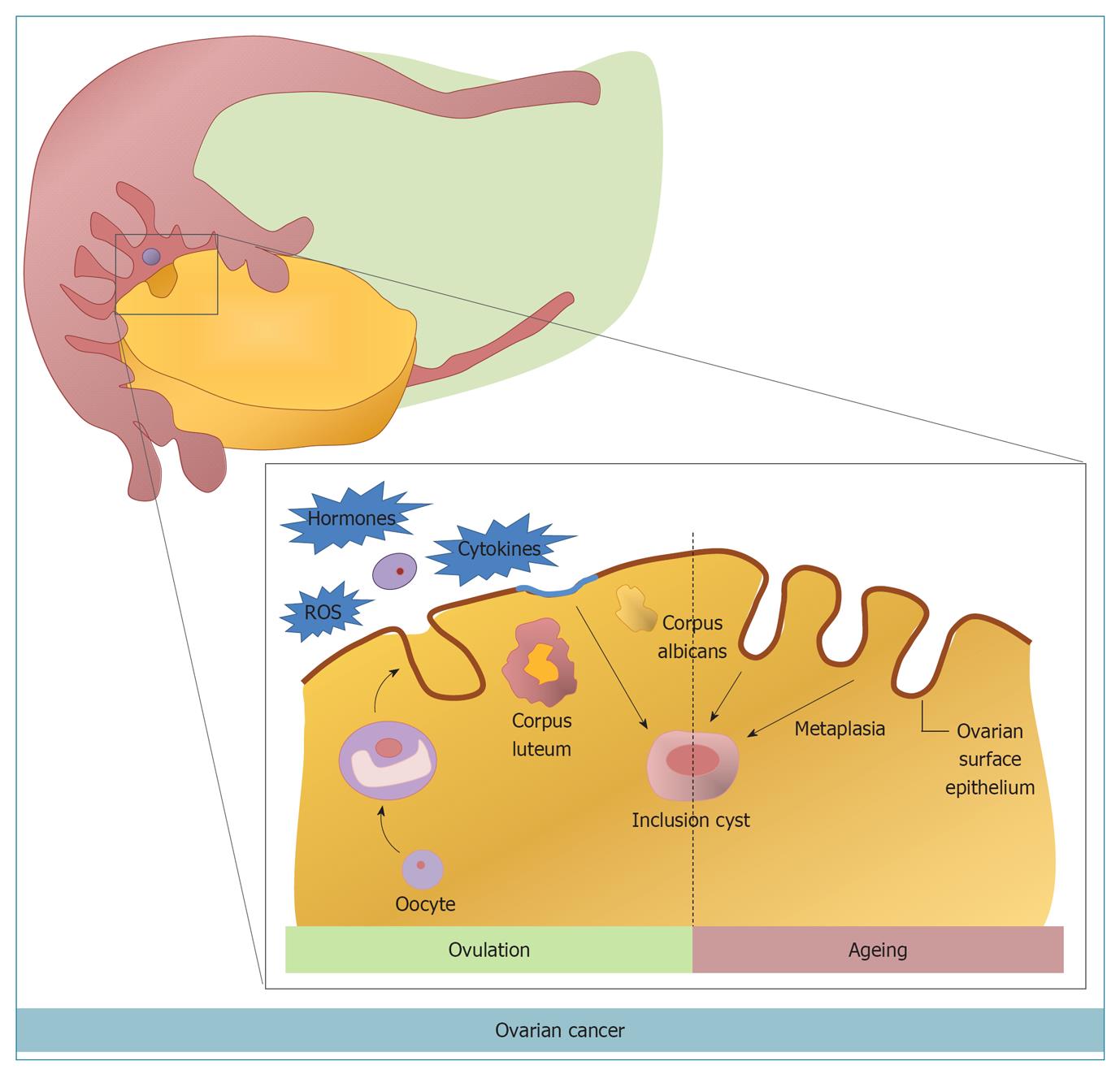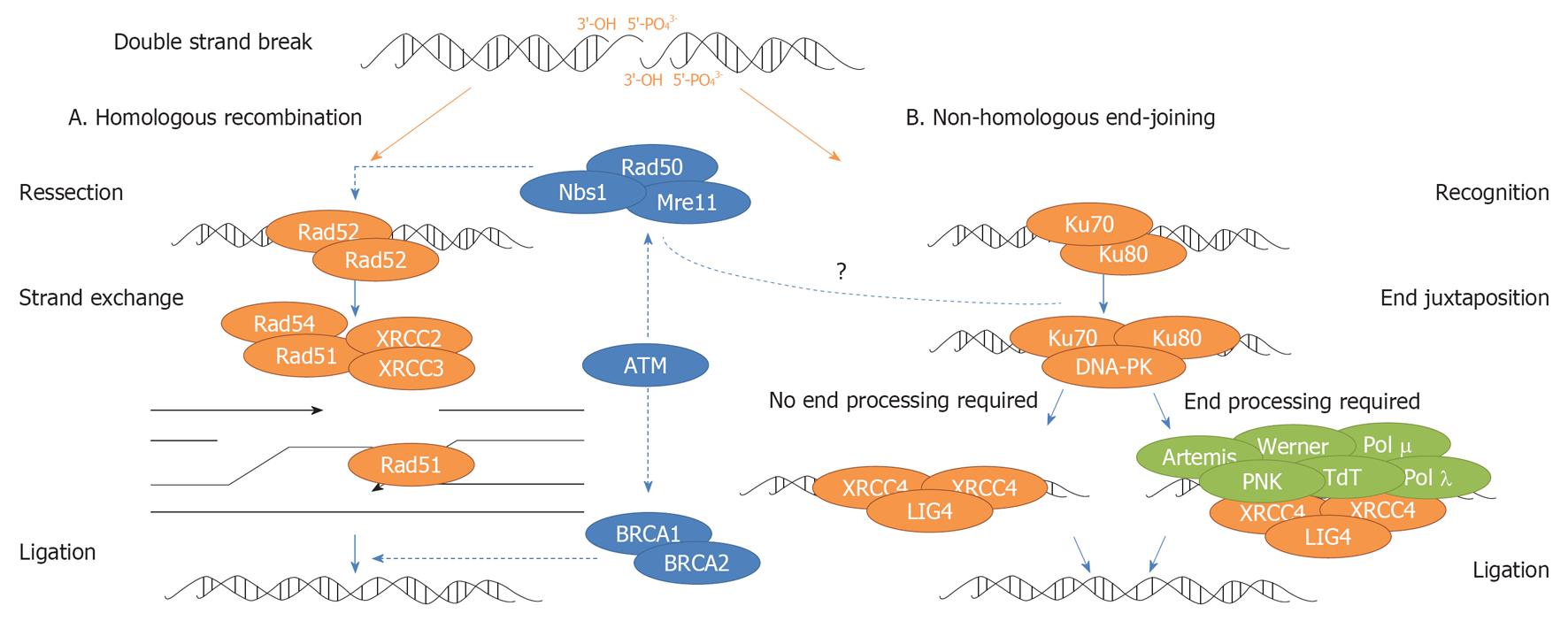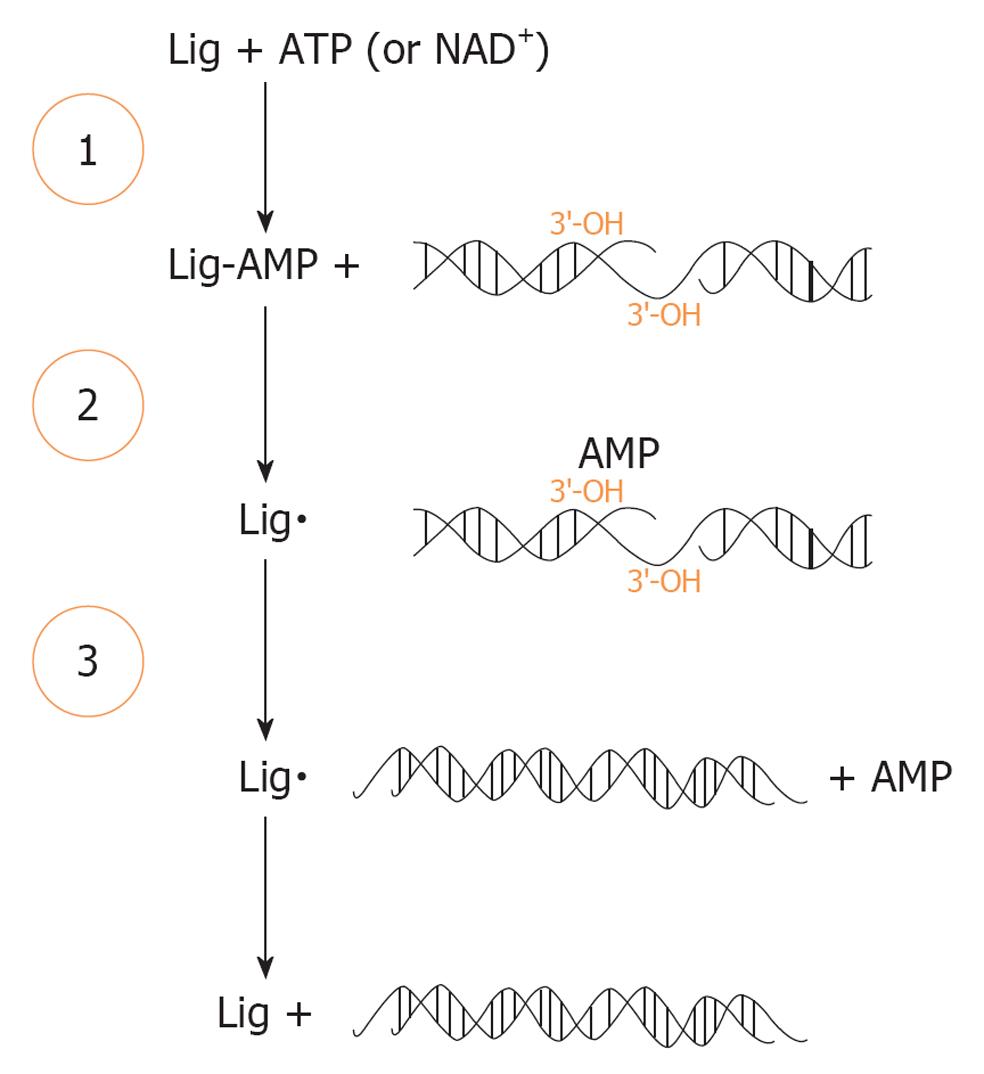Copyright
©2013 Baishideng.
World J Clin Oncol. Feb 10, 2013; 4(1): 14-24
Published online Feb 10, 2013. doi: 10.5306/wjco.v4.i1.14
Published online Feb 10, 2013. doi: 10.5306/wjco.v4.i1.14
Figure 1 Link between ovulation/ageing and ovarian cancer development.
Adapted from Levanon et al[3]. ROS: Reactive oxygen species.
Figure 2 Simplified overview of homologous recombination and non-homologous end-joining.
Homologous recombination (HR) pathway starts with break recognition and signaling by a complex containing NBS1, MRE11 and RAD50 (MRE11/RAD50/NBS1 - MRN complex). RAD51 and RAD52 catalyze and facilitate a strand exchange reaction. Assembly of RAD51 is facilitated by different RAD51 paralogs such XRCC2 and XRCC3. MRN complex also promotes activation of ATM, which in turn activates several DNA repair factors as BRCA1/2. HR finishes with DNA synthesis and final ligation. Non-homologous end-joining (NHEJ) pathway starts with the recruitment of Ku heterodimer (Ku70 and Ku80) to DNA ends. Once attached to double-strand breaks, Ku recruits and stimulates the DNA-PKcs, forming the DNA-PK holoenzyme. DNA-PK activates XRCC4-LIG4 complex, which links the broken complementary DNA ends together. If DNA ends are not ready to end joining, it is necessary a previous DNA end processing, which may involve numerous enzymes as Artemis, Werner, DNA Polimerases μ e λ, Polynucleotide kinase (PNK) and Terminal deoxynucleotidyl transferase (TdT), to conclude the NHEJ pathway. The role of MRN complex in NHEJ pathway it is still not clear.
Figure 3 Enzymatic ligation of DNA by DNA ligase.
The three-step reaction results in the sequential transfer of AMP (adenosine 5’-monophosphate) to an active-site lysine in Lig enzyme (step 1) then to DNA end (step 2), which results in the formation of a phosphodiester bond and consequently to a ligated DNA product (step 3). Lig: Ligase. Aapted from Ellenberger et al[49].
- Citation: Assis J, Pereira D, Medeiros R. Ovarian cancer and DNA repair: DNA ligase IV as a potential key. World J Clin Oncol 2013; 4(1): 14-24
- URL: https://www.wjgnet.com/2218-4333/full/v4/i1/14.htm
- DOI: https://dx.doi.org/10.5306/wjco.v4.i1.14











